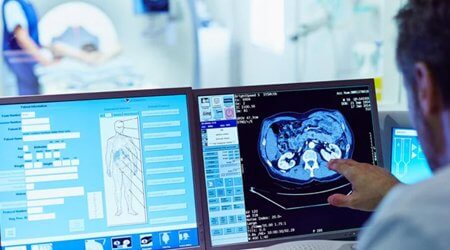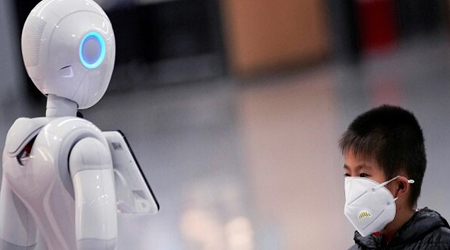Medical Annotation for AI and ML Implementation in a Healthcare Facilities
 By Anolytics | 15 July, 2022 in AI in Healthcare | 4 mins read
By Anolytics | 15 July, 2022 in AI in Healthcare | 4 mins read

Artificial intelligence (AI) is emerging as a significant component in many, if not all, forays where healthcare is delivered, physically or virtually. Despite the diversity of different settings, each presents unique requirements. Examples of AI deployment and use within the healthcare delivery system exist, and there is sparse evidence for improved processes or outcomes when AI tools are deployed in a clinical setting.
In clinical settings, AI can be effectively implemented with accurate medical annotation to engage patients in a thoughtful manner. Clinical data manipulation and transformation methods and tools have undergone steady and transformative progress, and increasingly refined data resources have led to novel applications of Artificial Intelligence in some health care settings.
The Fact AI will Replace Clinical Workforce is Just a Myth
Physicians in health care are used to augmentations. Specialists, nurses, physician assistants, pharmacists, and others support a doctor in healthcare delivery. While AI is often discussed as replacing humans, it will likely serve an augmenting role in the coming future, adding to the capabilities of humans, i.e., the healthcare professionals in clinical settings. As the course of the healthcare delivery system proceeds, the world will be watching artificial intelligence becoming a natural part of the clinical settings as the amount of data and information for patient care increases exponentially.
The expertise in data & knowledge, medical image annotation techniques, and new AI & machine learning innovations will improve physician & team performance while enhancing patient outcomes and their work’s accessibility, effectiveness, and efficiency. The fact that AI, as it appears to be eliminating the need for a human workforce, is quite wide of the mark. In the true sense, implementing artificial intelligence into clinical practice will not entirely replace the human workforce; instead, it will add more value to the overall productivity of clinical staff.
1. AI for Upgrading Conventional Clinical Settings with Software as a Medical Device (SaMD)
A decision support process involves providing recommendations or explicit guidance related to diagnosis or prognosis at healthcare facilities, precisely at the point of care. Implementing effective, safe, and efficient interventions in conventional healthcare facilities with AI-powered automation can entirely change the scene. Artificial intelligence with its unsurmountable potential for upgrading conventional clinical settings with automated medical imaging, diagnostic, and surgical procedures.
Software as a Medical Device (SaMD), which has a high scope of integrating medical data annotation for high-quality clinical training data development, can provide cloud-based automated systems for measuring, monitoring, and managing every clinical process and procedure in healthcare practice. Though software as a Medical Device (SaMD) needs regulations for how it will be implemented in the clinical setting, AI can be harnessed to upgrade the clinical setting with automation-enabled medical processes.
2. Healthcare Data Processing and Management
In recent years, clinicians have been overwhelmed by both scientific and clinical information generated by professionals. As a result of information overload, providers are dissatisfied, and medical errors are more likely to occur. Despite advances in clinical cognitive science, such as understanding how medical knowledge is routinely assessed during care delivery and how this knowledge can be transmitted to facilitate the workflow that has not been achieved in practice yet.
There have been significant improvements in the medical image annotation techniques for some time with the advancement in AI training data development technologies. These advancements have led to accurate identification and timely processing of the relevant clinical knowledge at the point of decision-making in medical practice. AI hereby is expected to speed up not only healthcare delivery with fast-paced data processing but transform the whole healthcare system with accurate and appropriate data management through AI integration.
3. AI Applications Focusing on the Needs of Patients and Caregivers
Applications for patients and caregivers combine public hardware and software with health care delivery. Basically, it refers to the area where patients and caregivers can use applications and tools directly. Health care delivery system interactions with patients are made easier through tools and software in this domain. Mobile applications and smartphones have transformed patient engagement, participation, and reminders, especially in health care. In addition to facilitating risk stratification, providing recommendations for treatment, and preventing complications associated with chronic diseases, these applications could also potentially facilitate the delivery of new critical information for health care providers.
Access to high-quality medical datasets and the availability of accurate medical image and video annotation services are likely to break the traditional boundaries of tasks now performed during face-to-face appointments. AI has the potential to work in a capacity to minimize the need for face-to-face appointments for clinical consultation — which, in the near future, will empower patients and their caregivers to set an easy course of medical care with remote clinical consultation, online prescriptions, live remote patient monitoring, and so on.
Final Thought
Health care delivery can be seen as being largely based on face-to-face interactions with patients. In order to provide direct care, a complex network of people and services is required, and they tend to generate and consume large amounts of data. The most common diagnostic procedures are lab tests, pathology, and radiology. As a result, they generate clinical data, including dense imaging, as well as interpretations and recommendations for care that must be accurately communicated to the provider and patients.
Anolytics can significantly contribute to healthcare delivery and clinical processes management with its half-a-decade-long exposure in the medical industry, clinical data processing, and medical data annotation expertise. Using artificial intelligence in radiology, ophthalmology, dermatology, and pathology, and processing signals, such as electrocardiograms, audiograms, and electroencephalograms (EEGs), is certain to play a significant role in the future. The AI will also be used to facilitate the integration of results with other clinical information in order to facilitate a smoother flow of work in a clinical environment.
please contact our expert.
Talk to an Expert →
You might be interested

- AI in Healthcare 27 Mar, 2020
How Big Data & AI is used in Healthcare System to Combat Coronavirus Outbreak?
Coronavirus or scientific name COVID-19, is one the most deadly virus of the century infected more than half of the mill
Read More →
- AI in Healthcare 16 May, 2020
Best Diagnostic Imaging Techniques for Using AI in Medical Diagnosis
Artificial intelligence (AI) and machine learning have enough potential to make various tasks in the healthcare industry
Read More →
- AI in Healthcare 11 Dec, 2020
Best Uses of Artificial Intelligence in Dentistry
Artificial intelligence (AI) is a branch of computer science that describes the research and development of computer-gen
Read More →